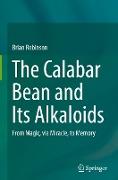- Start
- The Calabar Bean and its Alkaloids
The Calabar Bean and its Alkaloids
Angebote / Angebote:
Investigations into Calabar beans (the dried ripe seeds of Physostigma venenosum) and their alkaloidal components compose a classical scientific journey throughout some one-and-a-half centuries and not only represent a fascinating aspect of the history of medicine but which is, moreover, still ongoing at the forefront of chemical and medical discovery. Those in particular involving its major such component, l-physostigmine, have led to an understanding of some of the fundamental mechanisms occurring in physiology, pharmacology and biochemistry and, either actually or potentially (by providing a template and thereby acting as a “lead compound”) have provided a useful treatment for a variety of neurological disorders associated with irregularities in cholinergic transmission in which augmentation of cholinergic activity has proved to be beneficial. The aquatic leguminous vine, Physostigma venenosum, is widely distributed throughout the coastal regions of equatorial West Africa and having a colourful history – by virtue of their former use as an ordeal poison in trials for suspected witchcraft and to effect folkloric ritualistic executions in the Efik society of Old Calabar (now part of present-day south-eastern Nigeria) – are its dried ripe seeds (Calabar beans). The major toxic component of these is l-physostigmine which is also known as eserine and is, as yet, the only alkaloid which has also been isolated from a microbial source (along with l-N(8)-norphysostigmine), is the first alkaloid that was found to contain a 1, 2, 3, 3a, 8, 8a-hexahydropyrrolo[2, 3-b]indole tricyclic ring system and is the first natural product that was found to contain a carbamyl group. Furthermore, it is the first alkaloid that was proven to exert its pharmacological activity through the inhibition of an enzyme, is one of the first examples whereby the mechanism of action of a drug could be defined at the molecular level relatively simply, played a crucial role in the Nobel Prize-winning discovery of the mechanism of neurohumoral transmission, and has, either directly or by acting as a “lead compound”, afforded products for the treatment of a wide range of disorders associated with deficiencies in cholinergic transmission. Several other alkaloids have also been isolated from the Calabar bean. For some of these, structures have been established – using spectroscopic and spectrometric techniques and l-physostigmine as a model reference compound, syntheses effected and pharmacology investigated.
Lieferbar in ca. 20-45 Arbeitstagen
